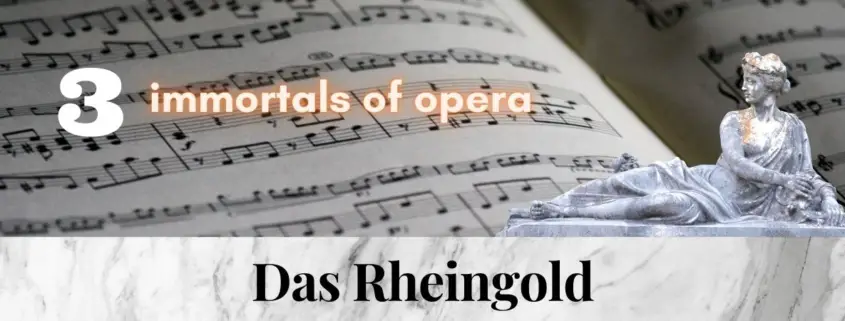With “Rheingold,” Wagner depicts the worlds of the Rhinemaidens and the gods, the underworld of the Nibelungs and Valhalla Castle with masterful musical means. After a composer’s block of almost six years, the 40-year-old’s creativity exploded and he composed this colorful world within six months. It is inconceivable that the “Rheingold”, when it was heard for the first time 23 years later in the context of a Ring performance in Bayreuth, still convinced as a visionary work.
The ouverture: the original state
Wagner wrote the prelude to Rheingold as early as 1853; 17 years later it was heard for the first time in Munich. It is inconceivable that when the piece was first heard in Bayreuth, 23 years after its composition, it was still considered visionary music of the future.
The prelude develops from a deep E-flat major chord. Eight double basses, a bassoon and later the horns begin with a primal motive, the so-called Genesis motive. It is the world in its primal state, the creation out of nothing. We encounter the so-called Genesis leitmotif in this prelude.
Musical quote: Genesis motif
After 2 minutes the motif changes into a wavy melody representing the river Rhine flowing lazily along. It is the Rhine motif that presents the world in its natural order.
Musical quote: Rhine motif
Wagner creates a unique prelude from the E-flat Major chord. This chord lingers for 136 bars and forms the foundation for a gigantic crescendo, which magically leads the listener into the underwater world of the Rhine Mermaids.
It is the awakening from the deep. To be able to play the low Eb, the double bass have to tune the lowest string of their instrument lower than usual. More and more instruments tune in and drive the chord in waves before them until the curtain reveals the scenery of the first act.
Vorspiel – Solti
The entry into the realm of the Nibelungs
Synopsis: In Alberich’s kingdom. In drudgery his brother Mime has to forge a magic helmet for Alberich, which makes the wearer invisible and together with the ring gives him power over the Nibelungs.
The scene changes, the light becomes dark and the music merges seamlessly into the realm of the Nibelungs. The dwarfves of the Nibelungs live in simple dwellings under the earth, where they mine the ores of the ground in drudgery.
Musical quote: Nibelheim motif
As an introduction to the world of Nibelheim, the Nibelheim motif is accompanied by the hammering of anvils. In order to realize this ingenious idea Wagner specified that the orchestra must be equipped with sixteen tuned anvils of various sizes.
Orchesterzwischenspiel – Janowski
Walhalla appears
Synopsis: Froh lets a rainbow emerge, which serves them as a path to the castle. Seized by a great thought, Wotan raises his sword against the castle. He will not return the ring, but a hero free of treaties. Seized, Wotan approaches the castle, he takes Fricka by the hand and christens her new home Valhalla.
We hear the rainbow motif in the orchestra:
Musical quote: rainbow motif
Then we hear the Valhalla motif, this time in radiant splendor, it is the triumph of Wotan to have given the gods a new home. With the appearance of the Ring motif, the joy is marred, for the castle was bought with Wotan’s breach of contract. Once again Wotan fights these gloomy prospects and is seized by a great thought: the sword motif sounds for the first time and refers to the coming events of the Ring:
Kurz Zitat Schwert Motiv
We listen to the radiant bass of George London, the Wotan of this recording.
Abendlich strahlt der Sonne Auge – London







Leave a Reply
Want to join the discussion?Feel free to contribute!